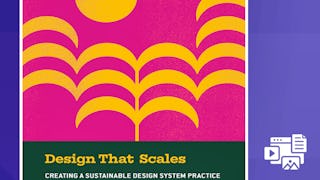The "Cadence Design Systems: Essential Guide" is designed to provide learners with a comprehensive understanding of Cadence Design Systems. The course covers a range of topics, including fundamental concepts, advanced techniques, and practical applications of Cadence software for electronic circuit design. Learners will explore an introduction to Cadence, circuit design principles, signal integrity, power management, and collaborative design projects. This course equips learners with the knowledge and skills needed to excel in electronic design. By mastering Cadence Design Systems, learners can enhance their productivity and efficiency in creating sophisticated electronic circuits. The course offers valuable insights into cutting-edge design practices, making it a must-have for professionals looking to stay ahead in the competitive world of electronic design automation.


Recommended experience
What you'll learn
Demonstrate the fundamentals of Cadence Design Systems.
Analyze and optimize circuit designs using Cadence tools.
Diagnose circuit design problems and device creative solutions.
Implement collaborative design principles and present design outcomes effectively.
Skills you'll gain
Details to know

Add to your LinkedIn profile
1 assignment
See how employees at top companies are mastering in-demand skills

There is 1 module in this course
This course provides a comprehensive overview of Cadence software for electronic circuit design. It covers key topics such as circuit design principles, signal integrity, power management, and collaborative projects. The course equips learners with the skills to excel in electronic design, enhancing their efficiency and productivity in creating advanced circuits. By mastering Cadence tools, learners gain valuable insights into modern design practices, making this course essential for professionals in the fast-paced world of electronic design automation.
What's included
19 videos5 readings1 assignment1 peer review2 discussion prompts
Offered by
Explore more from Software Development
 Status: Preview
Status: Preview Status: Preview
Status: Preview
Why people choose Coursera for their career





Open new doors with Coursera Plus
Unlimited access to 10,000+ world-class courses, hands-on projects, and job-ready certificate programs - all included in your subscription
Advance your career with an online degree
Earn a degree from world-class universities - 100% online
Join over 3,400 global companies that choose Coursera for Business
Upskill your employees to excel in the digital economy
Frequently asked questions
To access the course materials, assignments and to earn a Certificate, you will need to purchase the Certificate experience when you enroll in a course. You can try a Free Trial instead, or apply for Financial Aid. The course may offer 'Full Course, No Certificate' instead. This option lets you see all course materials, submit required assessments, and get a final grade. This also means that you will not be able to purchase a Certificate experience.
When you purchase a Certificate you get access to all course materials, including graded assignments. Upon completing the course, your electronic Certificate will be added to your Accomplishments page - from there, you can print your Certificate or add it to your LinkedIn profile.
Yes. In select learning programs, you can apply for financial aid or a scholarship if you can’t afford the enrollment fee. If fin aid or scholarship is available for your learning program selection, you’ll find a link to apply on the description page.
More questions
Financial aid available,





